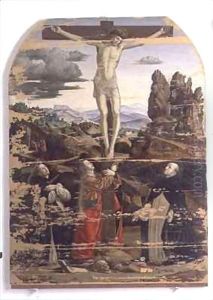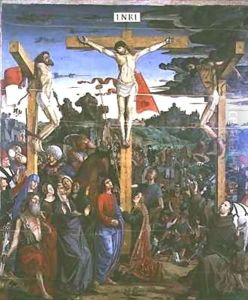Francesco Bianchi Ferrari Paintings
Francesco Bianchi Ferrari, an Italian painter, was born in Modena in 1447. Emerging during the Renaissance, a period that witnessed the revival of art, culture, and intellect across Europe, Bianchi Ferrari was part of the vibrant artistic movement that swept through Italy. His contributions, though less renowned than those of his contemporaries like Leonardo da Vinci or Michelangelo, played a significant role in the development of Renaissance art in the region of Emilia-Romagna.
Bianchi Ferrari's works are characterized by their vivid detail, harmonious colors, and the emotional depth of religious subjects, which were common themes of the era. He was deeply influenced by the works of his predecessors and contemporaries, which is evident in his adoption of the evolving techniques of perspective and human anatomy. His art reflects a blend of the traditional Gothic style with the emerging Renaissance ideals of beauty, proportion, and realism.
Throughout his career, Bianchi Ferrari was commissioned to work on various churches and public buildings, where his frescoes and altarpieces can still be admired today. Notable among his works is the decoration of the Cathedral of Modena and several contributions to the churches in the surrounding areas. His ability to convey religious narratives in a manner that was both profound and accessible made his work popular among the clergy and the laity alike.
Despite his contributions, Francesco Bianchi Ferrari remains a somewhat obscure figure in art history, overshadowed by the titanic reputations of his contemporaries. However, his work continues to be studied by those interested in the nuances of regional Italian Renaissance art, offering insights into the diversity and depth of this pivotal period in art history. Bianchi Ferrari died in 1510, leaving behind a legacy that, while not as widely recognized as that of some of his peers, significantly enriched the Italian Renaissance's tapestry of artistic achievement.


